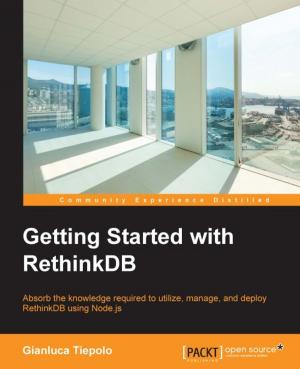Troubleshooting Puppet
Nonfiction, Computers, Operating Systems, Unix, Linux, Programming, Programming Languages| Author: | Thomas Uphill | ISBN: | 9781784392895 |
| Publisher: | Packt Publishing | Publication: | August 31, 2015 |
| Imprint: | Packt Publishing | Language: | English |
| Author: | Thomas Uphill |
| ISBN: | 9781784392895 |
| Publisher: | Packt Publishing |
| Publication: | August 31, 2015 |
| Imprint: | Packt Publishing |
| Language: | English |
Troubleshoot your Puppet infrastructure to leverage your system's performance effectively
About This Book
- Covers major tools in Puppet deployment
- Fix catalog compilation problems and deal with issues found in larger deployments, such as scaling and improving performance.
- A fast-paced guide with real-world examples
Who This Book Is For
If you are a beginner to intermediate Puppet Engineer looking for guidance to help fix problems with your Puppet deployments, this book is for you.
What You Will Learn
- Debug your Puppet infrastructure
- Use APIs to ensure services are working properly
- Fix catalog compilation issues
- Solve problems using Hiera tool
- Detect problems in your environment using PuppetDB tool
- Learn ways to format code to aid in identifying errors
- Troubleshoot errors in modules and templates
In Detail
Puppet is a configuration management system written for system administrators to manage a large number of systems efficiently and help maintain order. Deploying Puppet becomes more complex as you increase the number of nodes in your environment. The Puppet tool is an intelligent solution that increases the automation footprint for the proactive management of server infrastructures. Puppet's simple programming language is usable on most operating systems and is portable on different deployment environments.
We begin by looking at the puppet.conf server configuration file, and talk about possible problems that can occur. What does puppet really do in the background and what options does it provide for troubleshooting? This is what we will explore.
Moving on, we will be troubleshooting errors made in modules and templates, finding the best solutions. We will be writing code that will helping us in identify errors. Then we will explain how several ENCs do their job and how puppet communicates with them. We will learn how PuppetDB collects data generated by Puppet. It also enables advanced Puppet features like exported resources, and can be the foundation for other applications that use Puppet’s data. By the end of the book we will have learned the best debugging tips for Puppet and PuppetServer.
Style and approach
This is a quick-paced guide packed with real-world examples and solutions to obstacles in your Puppet infrastructure.
Troubleshoot your Puppet infrastructure to leverage your system's performance effectively
About This Book
- Covers major tools in Puppet deployment
- Fix catalog compilation problems and deal with issues found in larger deployments, such as scaling and improving performance.
- A fast-paced guide with real-world examples
Who This Book Is For
If you are a beginner to intermediate Puppet Engineer looking for guidance to help fix problems with your Puppet deployments, this book is for you.
What You Will Learn
- Debug your Puppet infrastructure
- Use APIs to ensure services are working properly
- Fix catalog compilation issues
- Solve problems using Hiera tool
- Detect problems in your environment using PuppetDB tool
- Learn ways to format code to aid in identifying errors
- Troubleshoot errors in modules and templates
In Detail
Puppet is a configuration management system written for system administrators to manage a large number of systems efficiently and help maintain order. Deploying Puppet becomes more complex as you increase the number of nodes in your environment. The Puppet tool is an intelligent solution that increases the automation footprint for the proactive management of server infrastructures. Puppet's simple programming language is usable on most operating systems and is portable on different deployment environments.
We begin by looking at the puppet.conf server configuration file, and talk about possible problems that can occur. What does puppet really do in the background and what options does it provide for troubleshooting? This is what we will explore.
Moving on, we will be troubleshooting errors made in modules and templates, finding the best solutions. We will be writing code that will helping us in identify errors. Then we will explain how several ENCs do their job and how puppet communicates with them. We will learn how PuppetDB collects data generated by Puppet. It also enables advanced Puppet features like exported resources, and can be the foundation for other applications that use Puppet’s data. By the end of the book we will have learned the best debugging tips for Puppet and PuppetServer.
Style and approach
This is a quick-paced guide packed with real-world examples and solutions to obstacles in your Puppet infrastructure.















